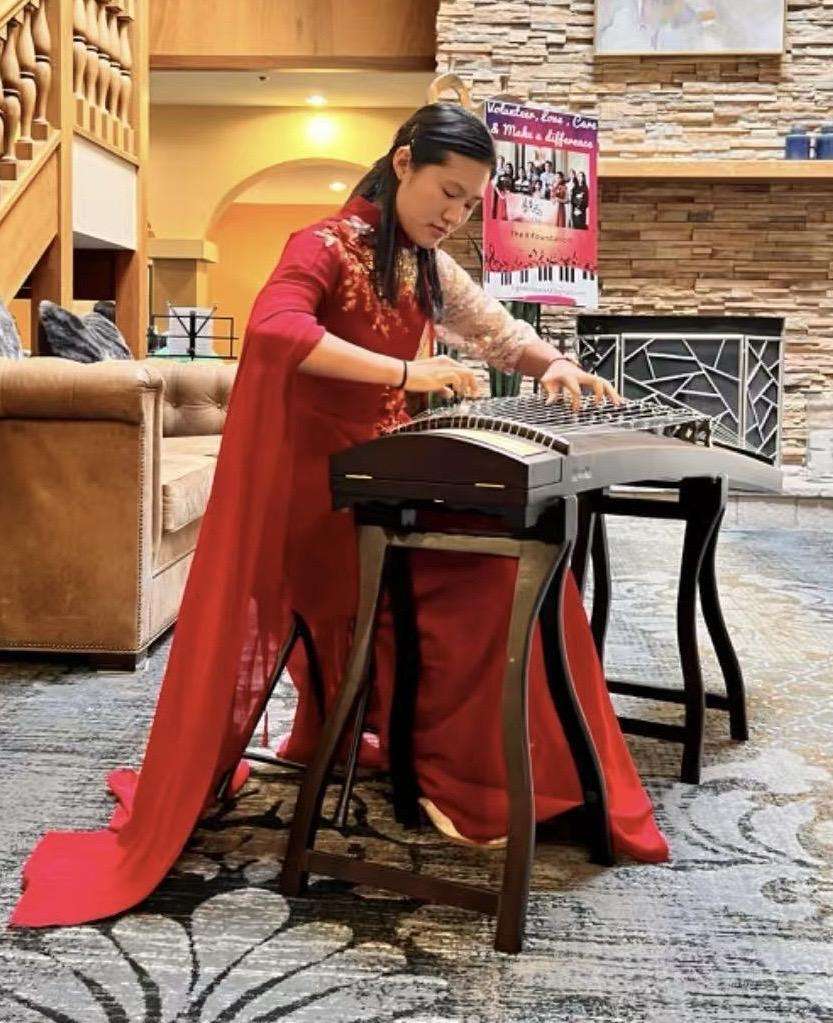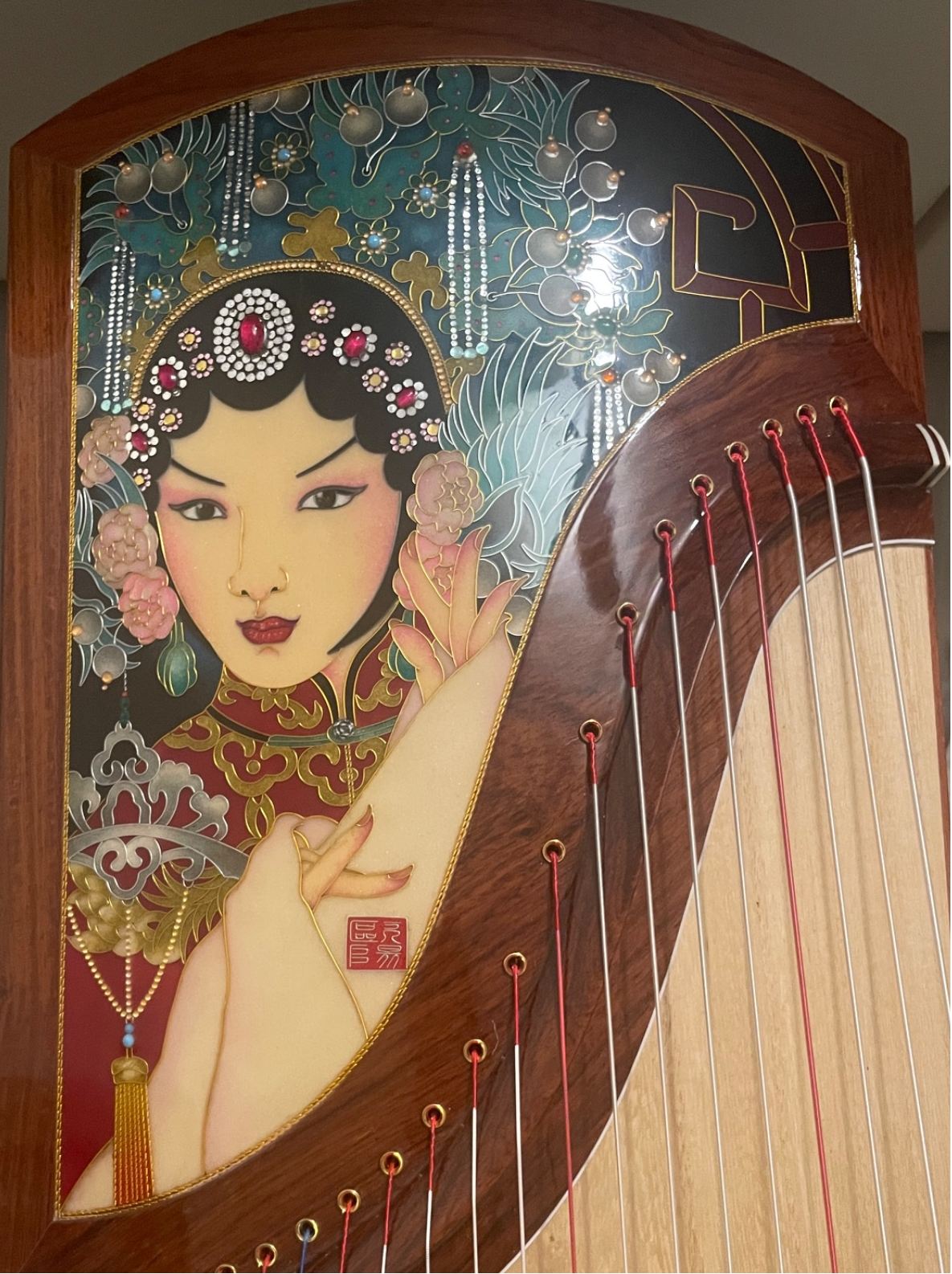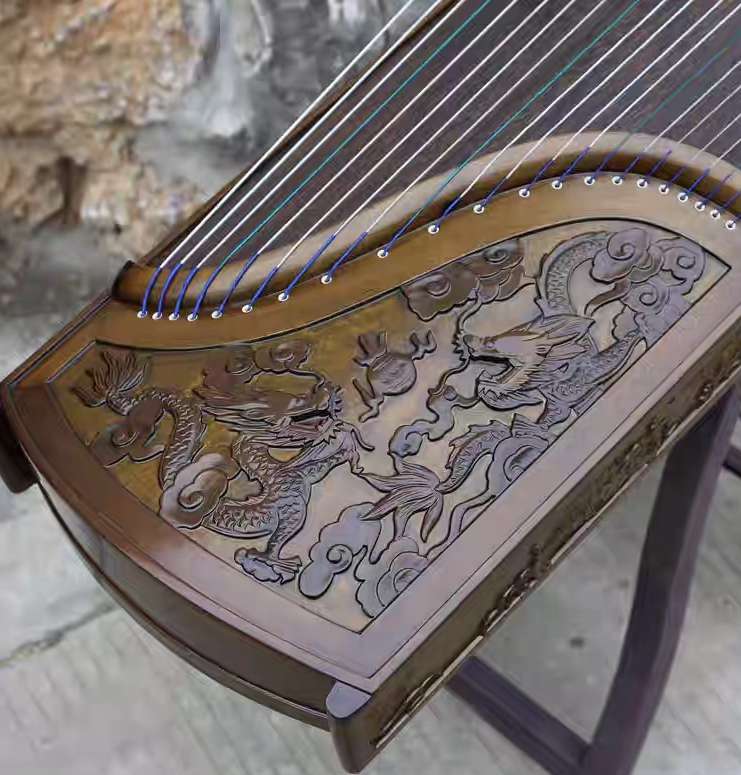Thousands of Years on Strings: The Art of Guzheng
By Sophia Wong

Traditional Chinese instruments are not only tools for expressing music, but also possess thousands of years of Chinese culture. Among many traditional musical instruments, the Guzheng—also known as the Chinese Zither—has a unique timbre and profound way of displaying its cultural heritage. Therefore, it has been crowned as the “King of music” and the “Oriental piano.” At a Lunar New Year’s party in 2019, I became entranced by a melody I was unfamiliar with; it was my first time enjoying the live performance of Guzheng music. Its beautiful resonance, cultural charm, and flowing melody drew my attention. Since then, I have started to learn Guzheng. I hope to systematically introduce the unique style of the Guzheng through this article so that more people can understand and love it.
History of Guzheng
The Chinese word for "Guzheng" consists of two characters: Gu and Zheng (gǔ \zhēng), with Gu meaning ancient times, and Zheng meaning zheng-like instruments, that is, plucked instruments with multiple strings arranged in parallel on a rectangular panel.
Guzheng has a history of more than 2,500 years. Its origin can be traced back to before 6th century BC in China---the Qin State during the Warring States Period. Therefore, it is also called the Qin Zheng, and was mainly played for court banquets. According to historical records, the earliest Guzheng had five strings, usually made of animal hair. During the Han and Tang dynasties, the Guzheng became the main instrument for musical activities, and evolved from five to twelve or thirteen strings which then were made of silk. Since then, the popularity and admiration for the Guzheng only grew with every dynasty. Around the Ming Dynasty, due to the continuous innovation of technology and the improvement of production methods, the Guzheng entered the lives of ordinary people from the palace. In the Qing Dynasty, the Guzheng further increased its musical capabilities, evolving from thirteen to fifteen or sixteen strings. With the rise of the industrial revolution, silk strings transitioned into copper or steel material. However, due to the introduction of Western culture towards the end of the Qing Dynasty, many traditional musical instruments including the Guzheng gradually declined and even faced extinction. In the 1950s, some traditional instrument performers enhanced the playing skills of the Guzheng, increasing the number of strings to the modernized twenty-one strings, now using nylon steel strings. By increasing the number of Guzheng strings, its musical range expanded significantly, and by replacing the string’s materials with nylon steel, it allowed the performers to increase their plucking force, amplifying the expressiveness and emotions of the music. Through these improvements, the Guzheng culture rekindled its popularity once again.
Guzheng Performing Techniques
Guzheng uses the pentatonic scale, Gong, Shang, Jue, Zhi, and Yu, which
correspond to the Western scale of Do, Re, Mi, Sol, and La. Guzheng strings lack the two scales of Fa and Ti, requiring the performer to utilize special fingering to play them. Guzheng players usually coordinate with both hands and wear a plectrum to play, making the fingering techniques relatively complex. The right hand has eight basic fingerings such as support, split, wipe, and pick, and the left hand has techniques such as pressing, sliding, trembling, and kneading to shape the "rhythm" of the instrument.
Modern Guzheng players have also innovated fingering techniques such as sweeping, rolling, quick fingering sequence, or even drumming the Guzheng, using the body of the instrument as a percussion while playing with the strings to expand the expressiveness.

Guzheng Schools
During the thousands of years of development, Guzheng art has branched off into different regions of China, each possessing their own style that combines with local culture, playing techniques, and musical expression. There are six major performance schools:
1. The popular area of Shaanxi Guzheng School is also the birthplace of Guzheng. The music style combines the regional culture of the Loess Plateau and the opera elements of Shaanxi Opera. The music style is slow, high-pitched and often sad. Representative pieces include "Qin Sang Qu".
2. Influenced by the Henan Yu Opera, the music style of Henan Zheng School is high-pitched, bold and dramatic. Representative pieces include "Su Wu's Homesickness".
3. The Shandong Zheng School has a crisp and bright timbre. The folk rap music style gives the audiences an experience like listening to a story. Representative pieces include "Autumn Moon in the Han Palace".
4. Zhejiang Zheng School is mainly popular in Shanghai and Hangzhou. Influenced by the Sizhu and Pingtan culture, the style of Zhejiang Zheng School could be delicate and elegant, or bold and passionate. Representative pieces include "Battling Typhoon" and "Fragrance of Jasmine".
5. Chaozhou Zheng School is mainly popular in Chaozhou, Guangdong, southern Fujian, Hong Kong and Taiwan. The timbre of Chaozhou Zheng School is delicate and pleasant, and the fingering is relatively soft to reflect the fluency and silkiness of the music. Representative pieces include "Winter Ducks Frolicking in the Water".
6. The Hakka Zheng School belongs to Guangdong Han music, which is similar to the Chaozhou Zheng School, but its style is closer to classical Han music, melodious and simple. Representative pieces include "Lotus Emerging from the Water".
As one of the earliest plucked instruments in China, the Guzheng spread to Japan and Korea through business and culture trade. It also spread to many Southeast Asian countries through the Maritime Silk Road, forming the East Asian Guzheng music cultural circle.
The Cultural Significance of the Guzheng
The Guzheng has a wide range of sound, clear and melodious timbre, rich
playing skills and strong expressiveness. It is known as the "King of music" and the "Oriental piano". It is one of China's most unique and important traditional musical instruments, symbolizing the humanistic spirit of Chinese traditional culture.
The pentatonic scale of the Guzheng corresponds to the five elements in
Chinese culture, namely gold, wood, water, fire and earth, representing the harmony between human and nature. One such piece presenting this harmony is “High Mountains and Flowing Water,” one of Guzheng's most famous pieces. Upon hearing this song, the audience is able to imagine the majestic shapes of mountains while hearing the sounds of a flowing waterfall.
The right-hand allegro can show a variety of sounds, such as birds singing, wind
blowing, flowers blooming, and trees moving. The dynamic playing skills of the left hand (such as tremolo, kneading, skimming, glissando, etc.) enable the players to more delicately and skillfully express the subtle changes of human emotions, also known as Guzheng's "rhyme". Whether it is a poetic and picturesque sentiment or an exciting and tragic emotion, the Guzheng can interpret it vividly.
In 2008, the art of Guzheng was enlisted as one of China's National Intangible
Cultural Heritage. Not only is the playing technique an intangible cultural heritage, but the Guzheng production process is also an important heritage. More and more craftsmen began to incorporate traditional crafting skills such as wood carving, enamel, jade carving, lacquer painting, etc. into the production process of the Guzheng. The Guzheng itself has now become an exquisite work of art.
As a treasure of traditional Chinese musical instruments, the Guzheng carries
thousands of years of cultural accumulation and artistic charm. It has rich historical, cultural and artistic value. They are not only a tool for musical expression, but also a carrier of cultural heritage and a symbol of national spirit.

The Development of Guzheng and its Future Cultural Significance
The famous Guzheng player Yuan Sha once said, "More people learn Guzheng
than any other traditional Chinese musical instrument." Because of the beauty of Guzheng music and the cultural symbols it represents, it is one of the most popular traditional Chinese musical instruments. Recently, modern Guzheng players have also continuously improved their playing methods, borrowing techniques of Western instruments such as piano, harp, and guitar. Modern composers have also incorporated elements such as jazz and rock into newly composed Guzheng repertoires. Because more performers are now promoting the culture of traditional musical instruments on world stages and social media platforms, the Guzheng art is becoming increasingly international.
I am incredibly grateful for the opportunity to study Guzheng with my teacher here in the United States, allowing me to learn about this beautiful traditional instrument. Each class the teacher not only teaches me the playing techniques, but also offers valuable knowledge on Chinese history and culture, for me to better understand the repertoire and the connotation of the music more accurately. I truly realized that it is not only learning an instrument, but also learning the Chinese language (because the teacher teaches in Chinese), philosophy, culture and history. I’ve noticed that more and more people around me are also discovering and learning Guzheng. I have many classmates from various cities in the United States, as well as Australia, Malaysia and the United Kingdom. I hope to have more opportunities to perform the Guzheng, and inspire more people to appreciate both the Guzheng art and Chinese traditional culture.